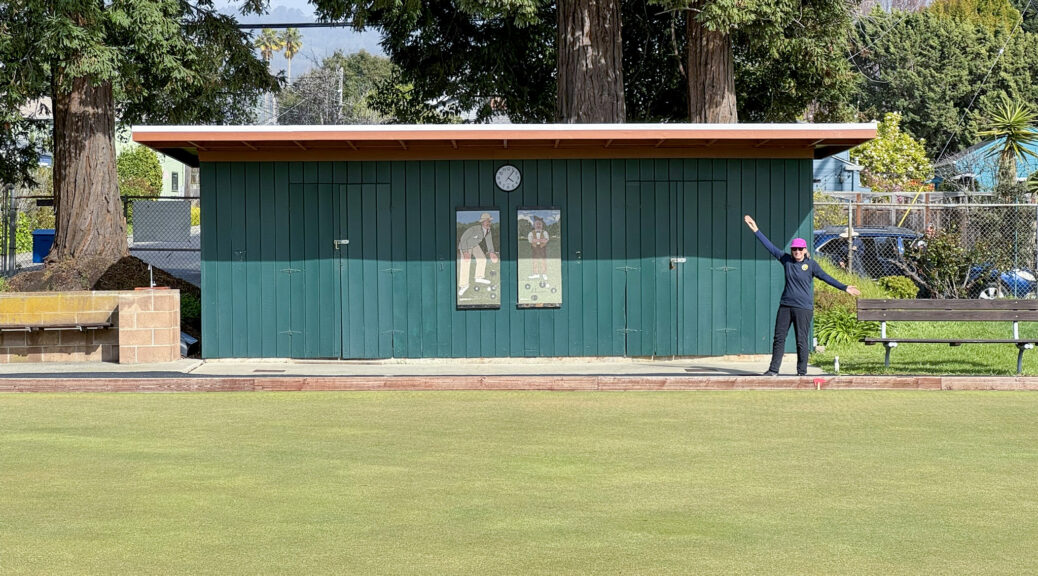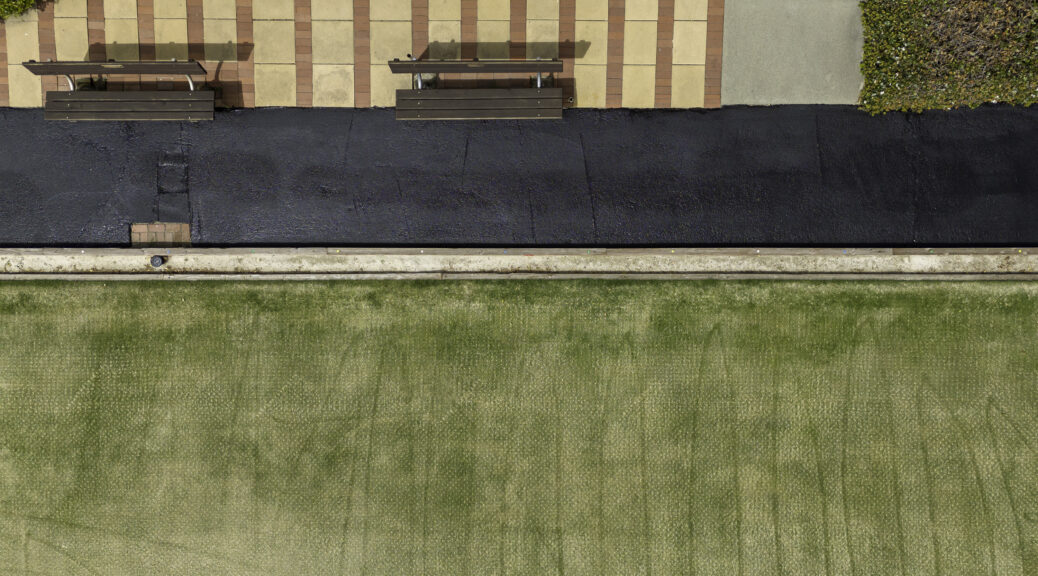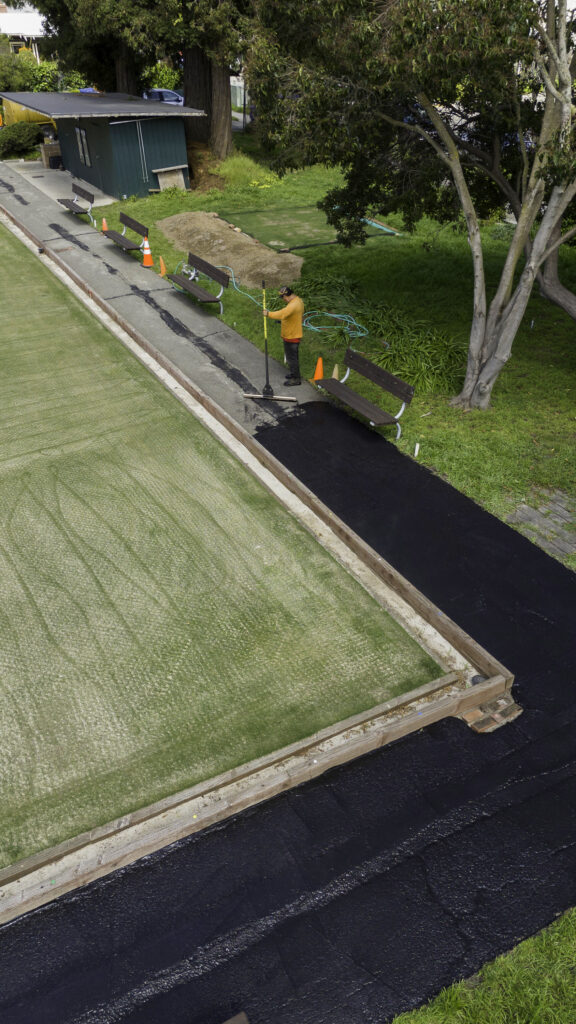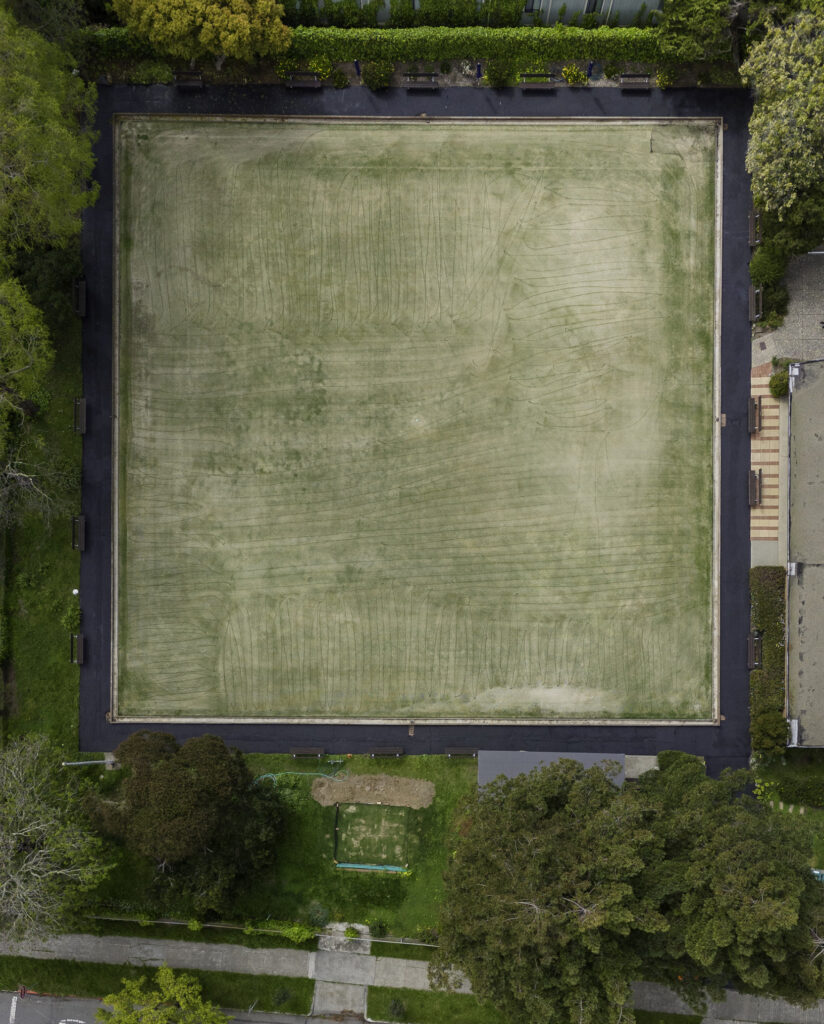After approximately 65 years of continued service, the equipment shed roof was starting to show its age. The shed was also being pushed forward by a growing redwood tree, which was probably a cheerful neighbor in its youth. The City of Berkeley maintenance department helped us by grinding off the sapling mound that was growing against the shed, relieving the pressure on the back wall of the shed.
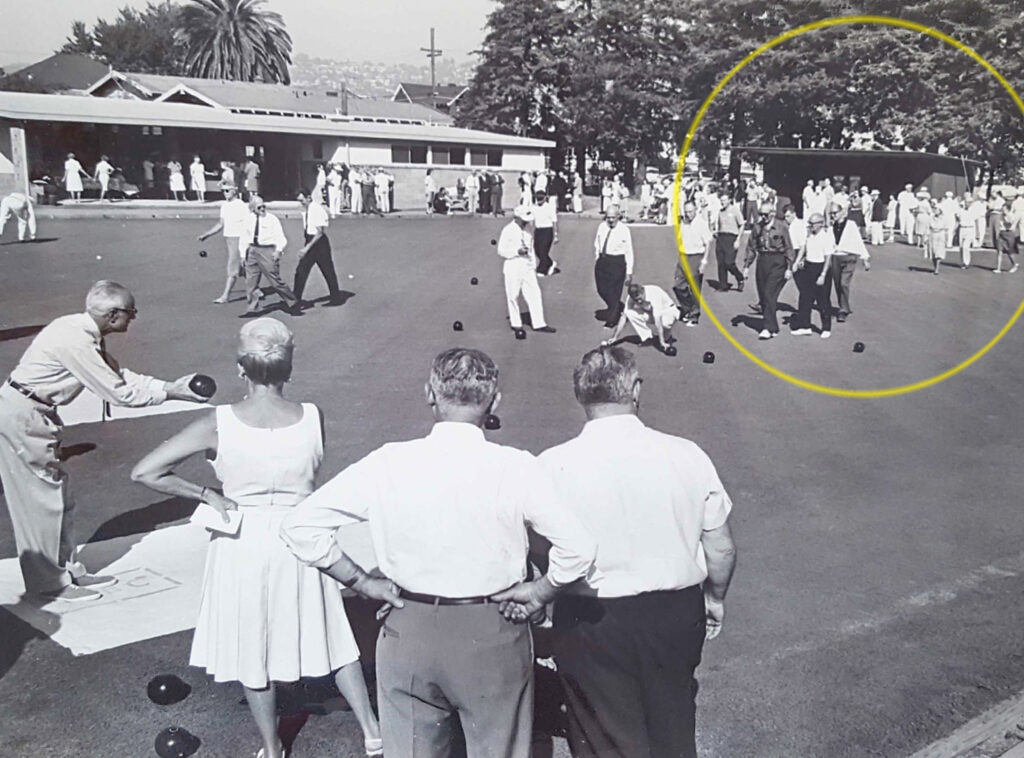
The roof covering was leaking and causing structural damage to the roof, causing it to partially collapse. To restore the roof and extend the shed’s service life, we chose to reframe the roof with larger rafters and install a membrane roof with a 40-year service life. Hopefully, this improvement will let the next generation of bowlers enjoy the shed without maintenance worries.
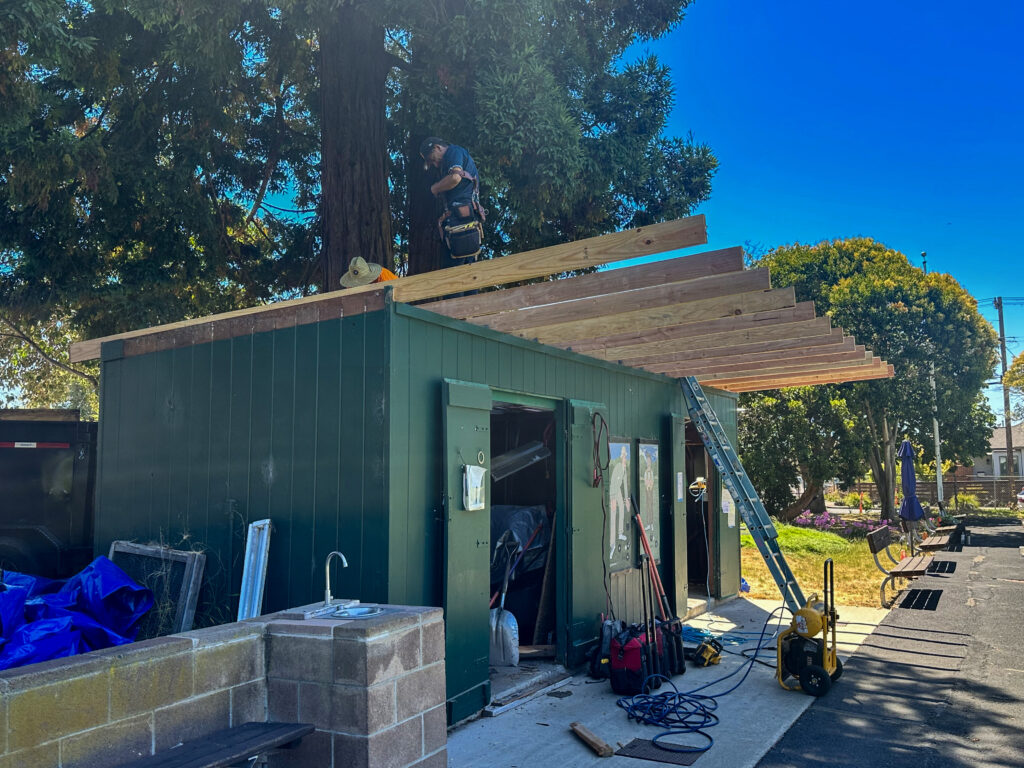
The mat shed is split into two parts. On the left hand side is an area for our Greenskeepers to keep specialized equipment for maintenance of the green. The right hand side is accessible by club members and houses the accoutrements required to set up the green for play. Here you can find the mats, jacks, green sheets, rink markers,, scoreboards, rakes, and more required for our games. It also provides storage for the tools used by our Thursday gardening group.
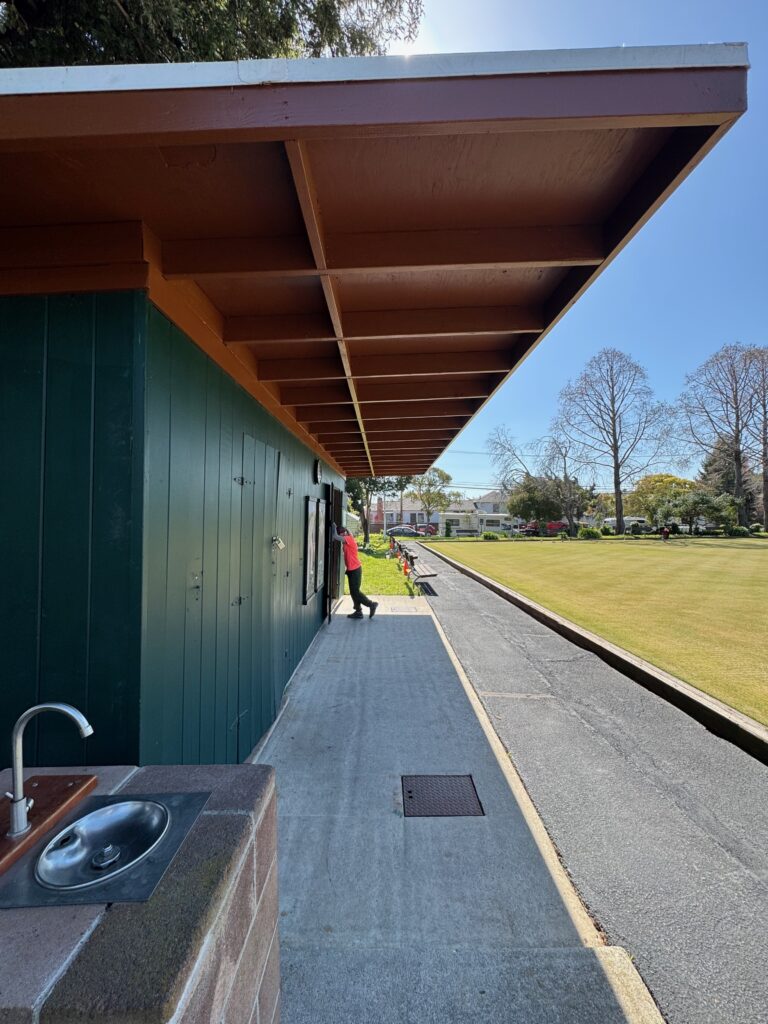
And finally, here’s a big shout out to Judy Hillyer who stepped up to complete a very tidy paint job for the new roof. Judy has been a great asset to the club, quietly taking on a series of painting jobs and carrying them out with care and precision. Yet another reason we’re fortunate to have her among us.

